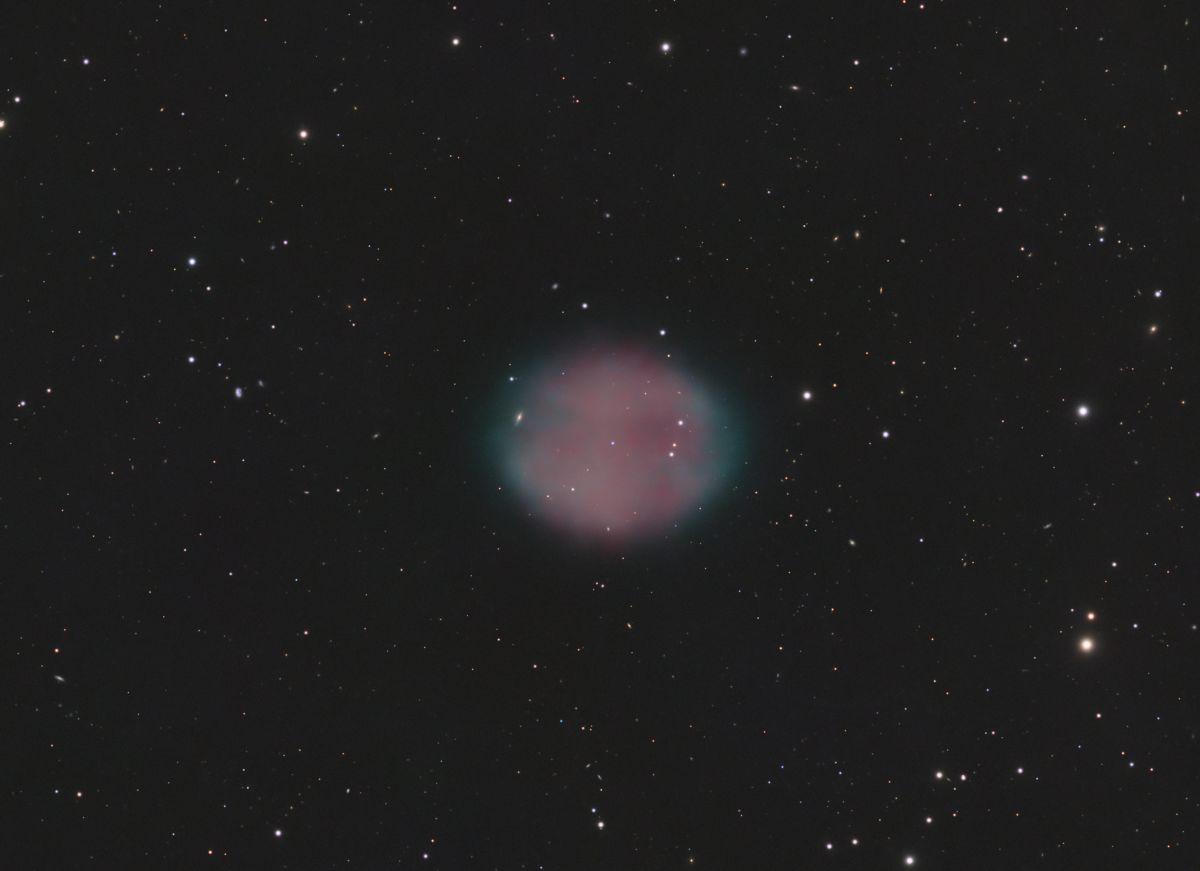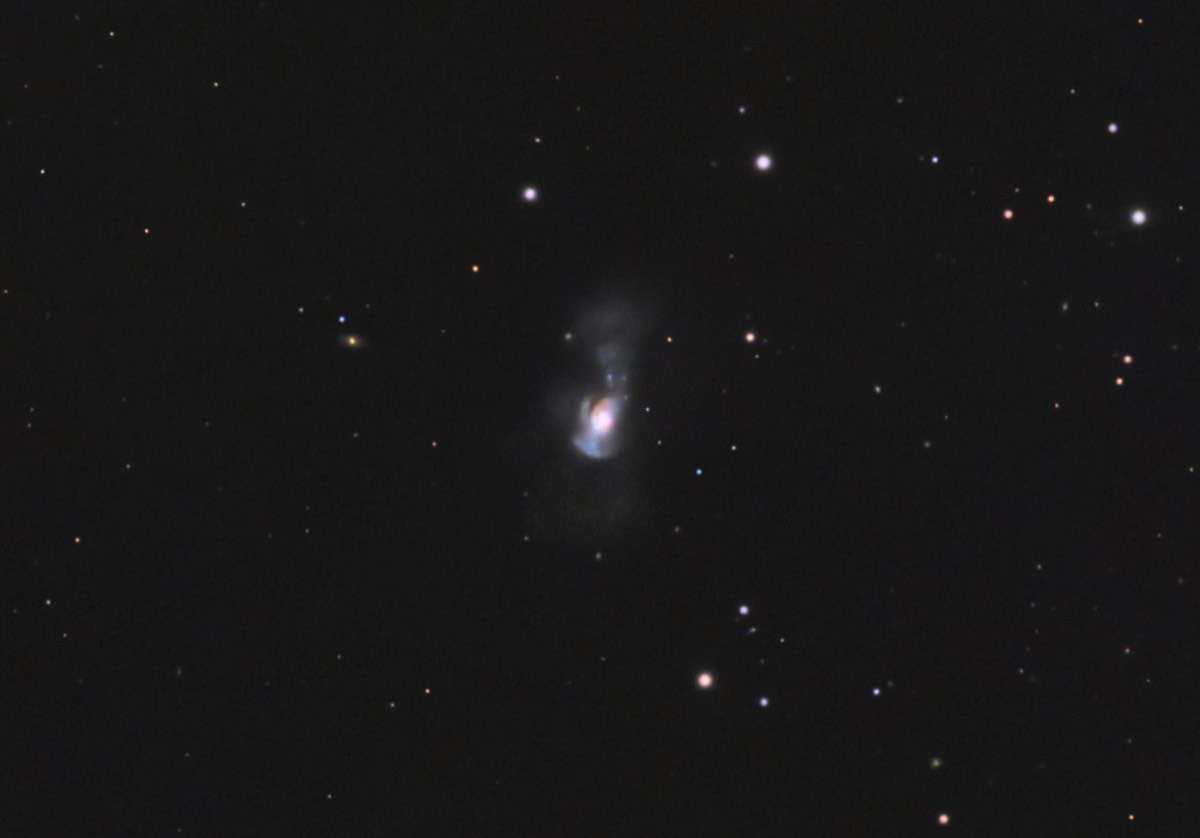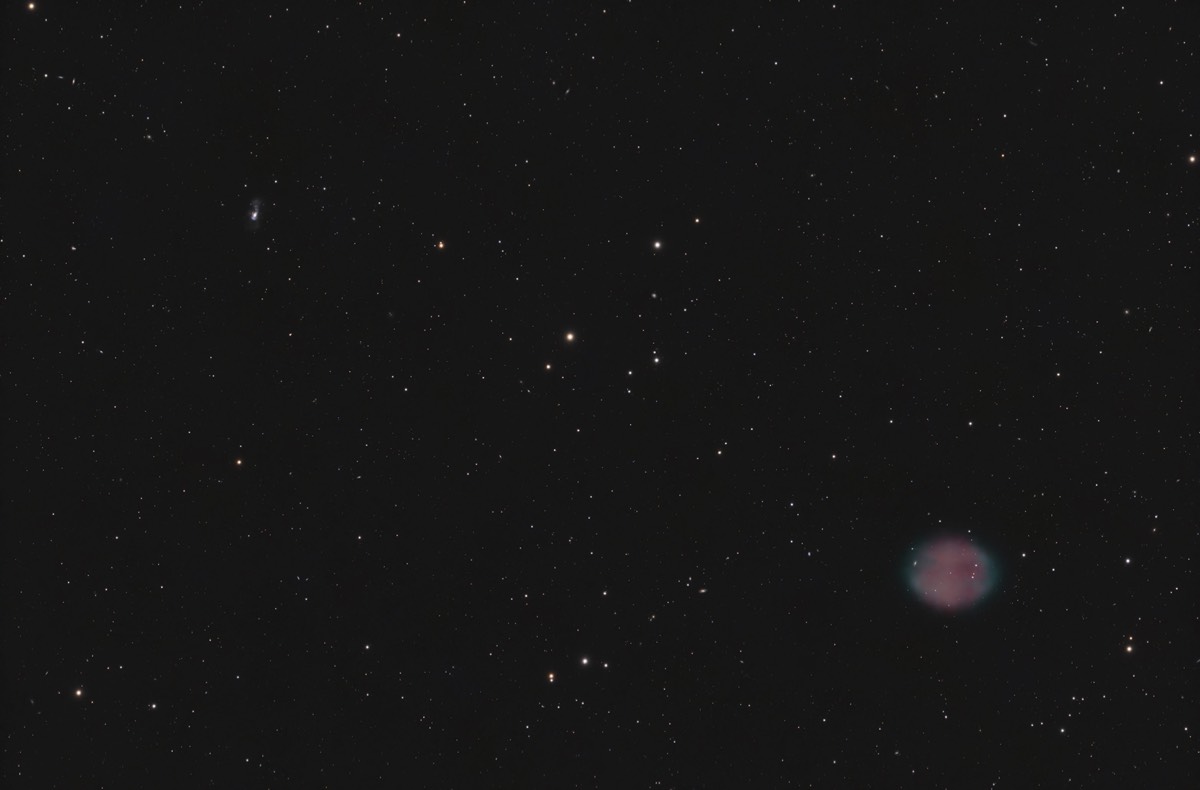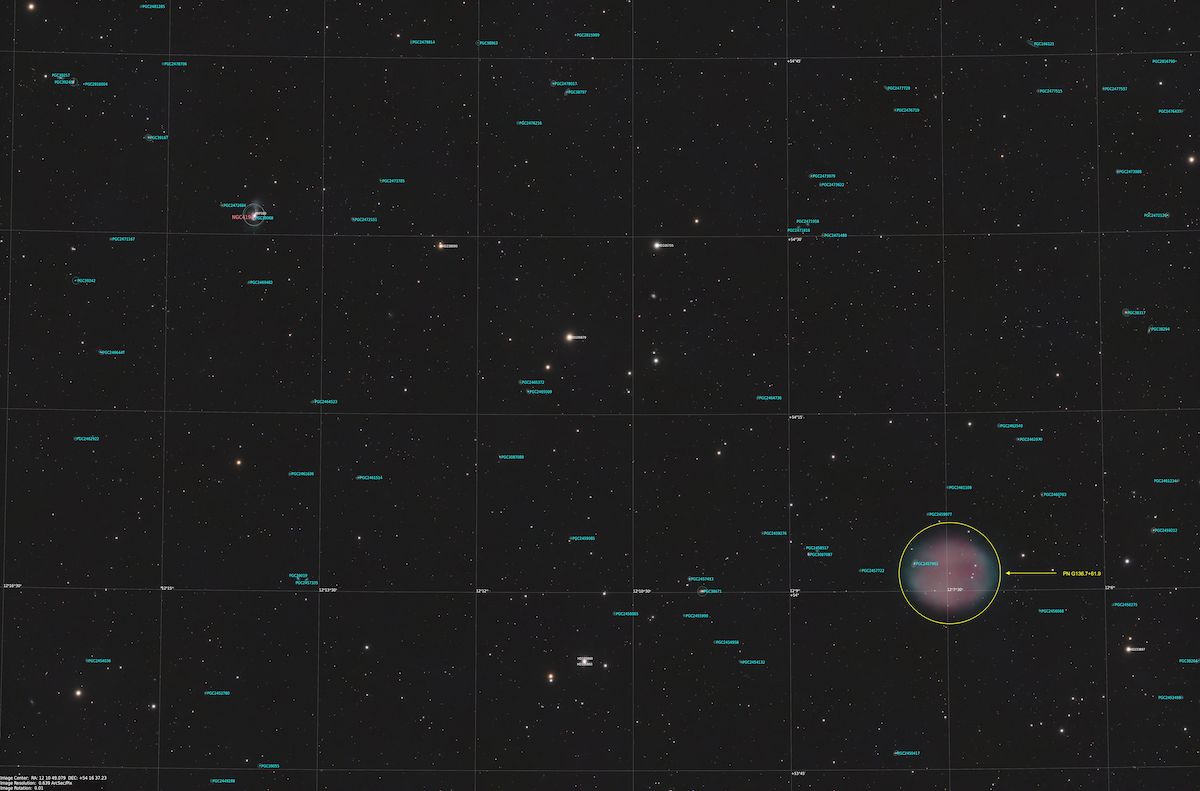A planetary nebula and a starburst galaxy
PN G136.7+61.9, NGC 4194
Published 10 July 24
Planetary nebula PN G136.7+61.9 with the Medusa merger galaxy NGC4194

PN G136.7+61.9

NGC 4194/ARP 160
Annotated image of the full FOV (click on image for full res)
About this object
A great pairing in the constellation Ursa Major is the very faint planetary nebula PN G136.7+61.9 and NGC 4194, a starburst galaxy that is undergoing a merger with another galaxy. In a wide field of view, both of these objects are visible and provide a nice contrast in distance. PN G136.7+61.9 is within our Milky Way and NGC 4194 (The Medusa merger galaxy) is estimated at 128 million light years distant. PN G136.7+61.9 was discovered in 2013 by professional astronomers analyzing data from the Sloan Digital Sky Survey (SDSS). The central star responsible for this planetary nebula is a magnitude 15.8 white dwarf called PG1204+543. PN G136.7+61.9 is very faint and requires long exposures to even be visible. In the wide field image above you can see both objects. The planetary nebula is in the lower right corner and NGC 4194 in the upper left. NGC 4194, also known as ARP 160 is an interesting galaxy undergoing a merger with another galaxy and its also known as the the Medusa merger galaxy. Because of this merger, bursts of star formation are taking place and tidal tails are visible fanning out from the galaxy. NGC 4194 is rather faint at magnitude 12.5 and a fairly small 2.8 arc min due to its distance of 128 million light years. Click on the full frame image for a full resolution view where you can pan around and see many other faint background galaxies. The image above is a RGB HOO image with a total exposure time of 58hrs.
A great pairing in the constellation Ursa Major is the very faint planetary nebula PN G136.7+61.9 and NGC 4194, a starburst galaxy that is undergoing a merger with another galaxy. In a wide field of view, both of these objects are visible and provide a nice contrast in distance. PN G136.7+61.9 is within our Milky Way and NGC 4194 (The Medusa merger galaxy) is estimated at 128 million light years distant. PN G136.7+61.9 was discovered in 2013 by professional astronomers analyzing data from the Sloan Digital Sky Survey (SDSS). The central star responsible for this planetary nebula is a magnitude 15.8 white dwarf called PG1204+543. PN G136.7+61.9 is very faint and requires long exposures to even be visible. In the wide field image above you can see both objects. The planetary nebula is in the lower right corner and NGC 4194 in the upper left. NGC 4194, also known as ARP 160 is an interesting galaxy undergoing a merger with another galaxy and its also known as the the Medusa merger galaxy. Because of this merger, bursts of star formation are taking place and tidal tails are visible fanning out from the galaxy. NGC 4194 is rather faint at magnitude 12.5 and a fairly small 2.8 arc min due to its distance of 128 million light years. Click on the full frame image for a full resolution view where you can pan around and see many other faint background galaxies. The image above is a RGB HOO image with a total exposure time of 58hrs.
Image Details
- Optics : Stellarvue SVX 152T refractor @f8 1200mm FL
- Mount: Paramount MYT
- Camera: ZWO ASI6200
- Filters: Chroma 50mm RGB, 5nm OIII, Astrodon 50mm 5nm Ha
- Exposure (min): RGBHaOIII 120:112:116:1536:1600, total exposure time 58hrs, 2x2 binning drizzled to 1x1 resolution
- Automation Control: The Sky X, Voyager, PrimaluceLab Eagle 4
- Guiding: StarlightXpress Lodestar X2
- Processing Software: PixInsight, PS CC,
- Location: Stark Bayou Observatory, Ocean Springs, MS
- Sky: Typical SQM 19.6, Bortle 5-6, Suburban
- Date: 13 April - 26 June 2024








